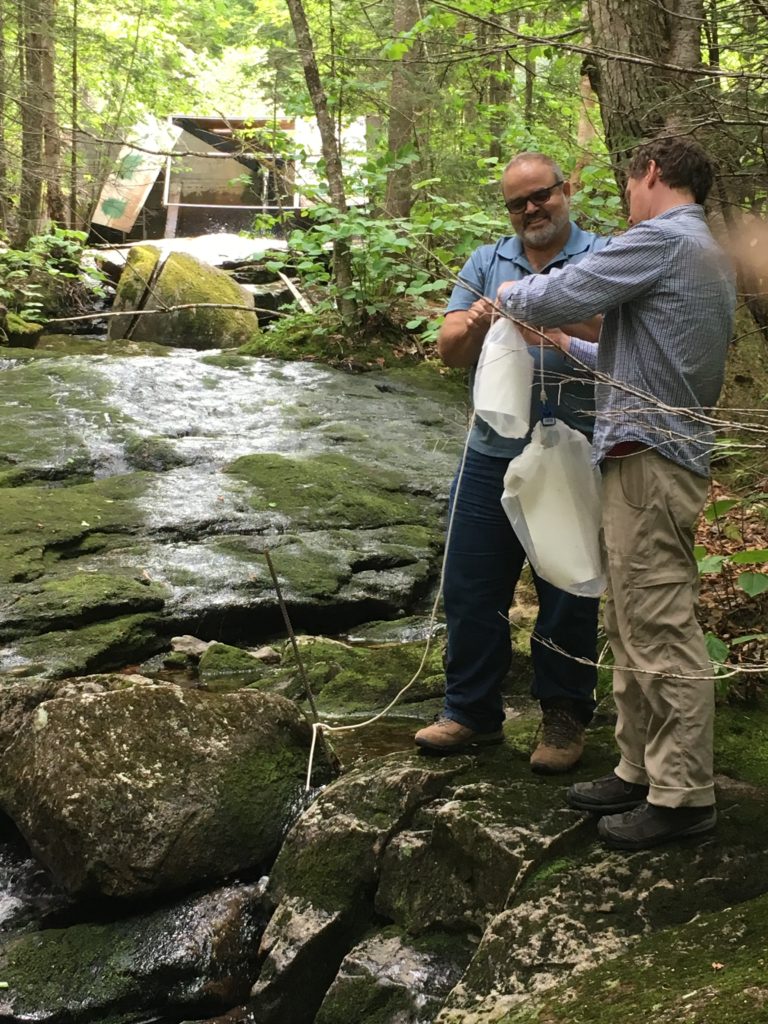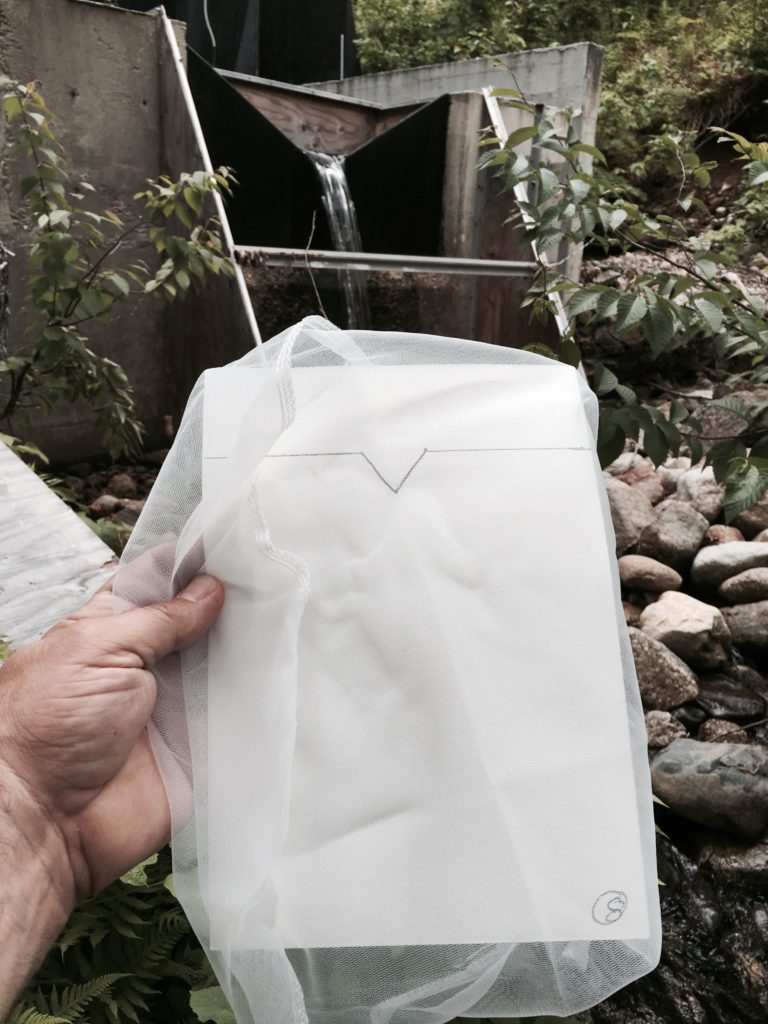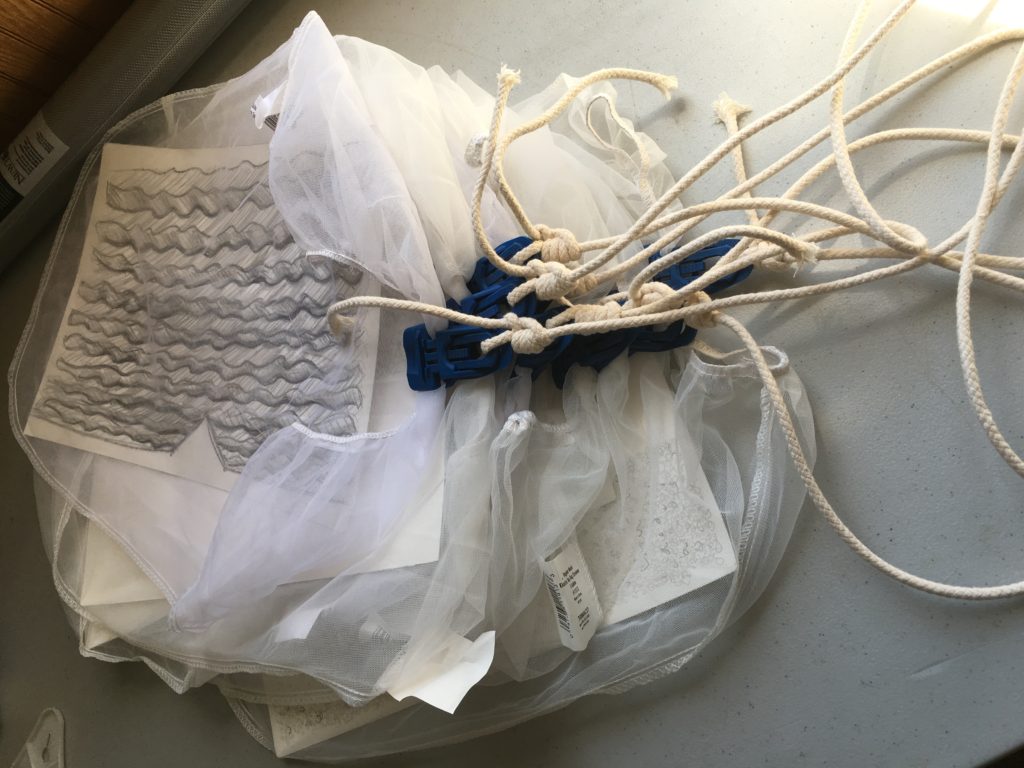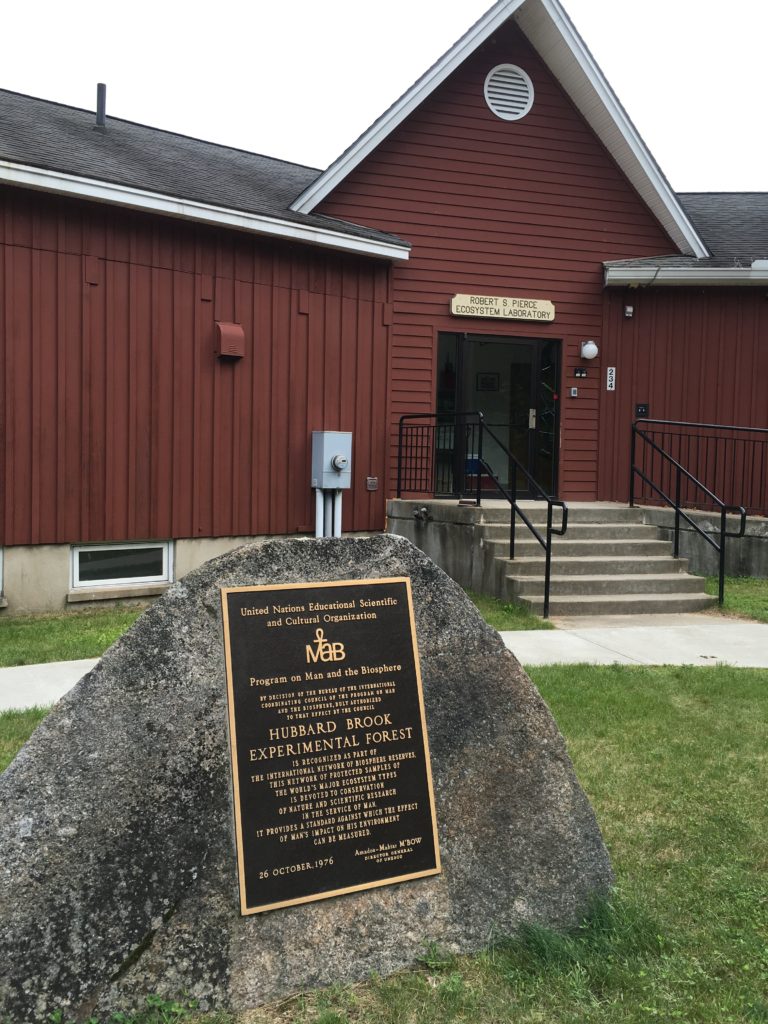
- This event has passed.
“Water Paintings” exhibition by Xavier Cortada
March 30, 2018 - May 3, 2018
“Water Paintings”
a solo exhibition of works
created at Hubbard Brook Experimental Forest
by
Xavier Cortada
at
Hibiscus Gallery
Pinecrest Gardens
11000 S. Red Road
Pinecrest, FL 33156
Exhibit runs from March 30th through April 29th, 2018
Join us for the opening reception on
April 8th from noon to 2pm
WATER PAINTINGS

Xavier Cortada works with Hydrologist Mark Green to create “Water Paintings” at Hubbard Brook Experimental Forest.
“Water Paintings allowed me to give water at Hubbard Brook’s nine watersheds a voice. In the work, I made water the protagonist. In June 2016, I placed nine pencil drawings and nine pieces of watercolor paper inside nylon mesh. I then tied the mesh bags to a rope at each of the nine weirs at Hubbard Brook Experimental Forest and left them there for a period of 16 weeks in 2016. The water flowing through the mesh stained the paper inside. Water samples and water data were collected by scientists over the same 16-week period from the same nine weirs. The final work included water samples, data, even the residue in filters. I wanted audiences to see the water, what the water did, and what it painted as it flowed and transported materials down the stream.”
Xavier Cortada


Xavier Cortada, “Water Paintings: Hubbard Brook,” paper and residue captured from water flowing from each of the 9 weirs at the Hubbard Brook Experimental Forest LTER in New Hampshire, 2016
Hubbard Brook scientists pioneered the small watershed approach, which transformed the study of forests by using whole watersheds as living laboratories. This ground-breaking approach fostered many new discoveries beneficial to both science and society.
Small first-order watersheds can show us how ecosystems respond to environmental change. Chemical concentrations combined with stream flow provides data on stream-water element flux for each watershed.
Water samples and data collected by scientists over a 16-week period from all nine watersheds hang on the walls CLIMA.
Nine sets of “Water Paintings” hang from the ceiling. Cortada created each using the same water scientists study. He placed watercolor paper in mesh and tied it to a rope in each of the nine weirs. The works depict 4 months of streamflow.
About the Hubbard Brook Experimental Forest and LTER
The Hubbard Brook Experimental Forest (HBEF) is a 3,160 hectare reserve located in the White Mountain National Forest operated by the USDA Forest Service, near Woodstock, New Hampshire. The on-site research program is dedicated to the long-term study of forest and associated aquatic ecosystems. It has produced some of the most extensive and longest continuous data bases on the hydrology, biology, geology and chemistry of a forest and its associated aquatic ecosystems.
Hubbard Brook scientists pioneered the small watershed approach, which transformed the study of forests by using whole watersheds as living laboratories. This ground-breaking approach fostered many new discoveries beneficial to both science and society.
Hubbard Brook scientists discovered acid rain in North America by taking meticulous, long-term measurements of rain and snow. Scientists continue to document acid rain’s damaging effects and track recovery linked to pollution reduction efforts.
Learn more at http://www.hubbardbrook.org

Hubbard Brook Experimental Forest
Special thanks to the entire Hubbard Brook team, the USDA Forest Service, Dr. Lindsey Rustad, Hydrologist Mark Green, Sr. Researcher Tammy Wooster, Amey Bailey, and Mary Martin.
About the artist:
Xavier Cortada:
Xavier Cortada’s engaged science-art practice is based at FIU School of Environment, Arts and Society and the College of Communication, Architecture + The Arts.
Cortada often engages scientists in his art-making: At CERN, Cortada and a particle physicist created a permanent digital-art piece to celebrate the Higgs boson discovery. Cortada has worked with scientists at Hubbard Brook LTER on a water cycle visualization project driven by real-time data collected at a watershed in New Hampshire’s White Mountains.
He has collaborated with a population geneticist to explore our ancestral journeys out of Africa 60,000-years ago, with a molecular biologist to synthesize a DNA strand from a sequence 400 museum visitors randomly generated, and with botanists to develop multi-year participatory eco-art eff orts to reforest mangroves, native trees and wildflowers across Florida.
The Miami artist has created environmental installations (North Pole and South Pole) and eco-art (Taiwan, Hawaii and Holland) projects, and painted community murals addressing peace (Cyprus and Northern Ireland), child welfare (Bolivia and Panama), AIDS (Switzerland and South Africa) and juvenile justice (Miami and Philadelphia) concerns. His studio is located at Pinecrest Gardens.
Details
- Start:
- March 30, 2018
- End:
- May 3, 2018
- Event Category:
- Cortada solo exhibit at Hibiscus Gallery
- Event Tags:
- aqua, art, brook, Cortada, exhibit, Florida, Florida is Nature, Floridaisnature, Hubbard Brook, Hubbard Brook Experimental Forest, LTER, Nature, New Hampshire, Pinecrest, Pinecrest Gardens, river, water, water cycle, Water Paintings, watershed, White Mountains, Xavier Cortada, xcortada
- Website:
- www.cortada.com/clima
Organizer
- Xavier Cortada
- Phone
- 305-858-1323
- xavier@cortada.com
- View Organizer Website
Venue
- The Hibiscus Gallery at Pinecrest Gardens
-
11000 SW 57th Avenue
Pinecrest, FL 33156 United States + Google Map - Phone
- 305-669-6990
- View Venue Website

